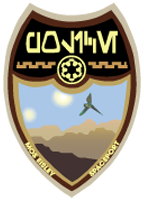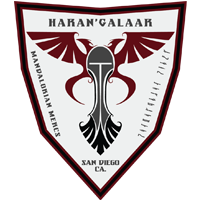2018), but no A. infectoria isolates were obtained from potato-producing areas of China, including the Inner Mongolia Autonomous Region (Zheng et al. The conidia were ovoid or ellipsoid, muriformly septate with 1 to 8 transverse septa and 0 to 3 longitudinal septa, in a size range of 8.6 to 48.8 4.6 to 17.5 m (length width). The plastic boxes were linked together and bridged with two layers of sterile paper that had been soaked in sterile distilled water. The number of transverse septa and longitudinal septa varied from 4 to 12 and 0 to 12, respectively. The conidial apex is tapered. Thus, Alternaria fungi cause opportunistic infections. Front: powdery, velvety, or cottony mycelium rapidly matures to OLIVE TAN. 1, Supplementary Table S1). In favourable conditions, conidia germinate by forming a germ tube. It is the most common species in this group of fungi. Ind Crop Prod 126:190200. Oxford Univ. Gypsophilae. Correspondence to Information about a service, product or treatment does not imply endorsement. Support values at nodes represent RAxML bootstrap percentages with values 70% shown above the branches. 3. Colonies are fast growing, black to olivaceous-black orgreyish, and are suede-like to floccose. A. Berbee, M. L., Pirseyedi, M., and Hubbard, S. Research notes on leaf blight, brown spot, and leaf spot of watermelon, Food and Agriculture Organization of the United Nations. Jian Xin Deng supervised the final version as well. Learn more about Institutional subscriptions, Andersen B, Kroger E, Roberts RG (2001) Chemical and morphological segregation of Alternaria alternata, A. gaisen and A. longipes. isolates were recovered from Heilongjiang Province, northern China. Causing Maize Leaf Spot in Heilongjiang Province, China, Identification and pathogenicity of Alternaria alternata causing leaf blight of Bacopa monnieri (L.) Wettst. Both chaetoglobosins and chetomins are highly cytotoxic, affecting cell division, locomotion, formation of cell surface projections, and glucose transport [4]. : from general saprophyte to specific parasite. Remarkably, Alternaria sp. In: Innis MA, Gelfand DH, Sninsky JJ (eds) PCR protocols: a guide to methods and applications. Its teleomorphic genera are called Clathrospora and Leptosphaeria. gaisen complex species group) that are illustrated in the presented phylogenetic tree (Fig. The one isolate produced short conidial chains on PCA media. https://doi.org/10.1093/bioinformatics/14.9.817, Pryor BM, Gilbertson RL (2000) Molecular phylogenetic relationships amongst Alternaria species and related fungi based upon analysis of nuclear ITS and mt SSU rDNA sequences. The other three isolates were identified only by colony morphology since no conidia were produced on PDA or PCA plates. Front: initially velvety and white turns to POWDERY and BLUE GREEN with white periphery. The GAPDH, HIS3, rDNA ITS, and RPB2 gene sequences of the 95 representative isolates were deposited in GenBank (Table 1). I and J, A. infectoria. B., Thomma, B. P. H. J., and Crous, P. W. Woudenberg, J. H. C., Truter, M., Groenewald, J. cultured on PDA plates for 7 days at 25C in the dark. Iacomi-Vasilescu, B., Avebot, H., Bataill-Simoneau, N., Laurent, E., Gunard, M., and Simoneau, P. Kang, J. C., Crous, P. W., Mchau, G. R. A., Serdani, M., and Song, S. M. Kang, J. C., Crous, P. W., and Schoch, C. L. MAFFT multiple sequence alignment software version 7: improvements in performance and usability. In this study, 830 Alternaria isolates, recovered from symptomatic watermelon leaves, were identified based on morphological traits, pathogenicity, and multilocus sequence analyses of glyceraldehyde-3-phosphate dehydrogenase ( GAPDH ), histone 3 ( HIS3 ), the internal transcribed spacer of ribosomal DNA (rDNA ITS), and the RNA polymerase II 2001). 106, No. Values followed by different lowercase letters within a column are significantly different according to the least significant difference test (P < 0.05). 106, No. Microbiol Res 163:208214. The mycelial sample was then ground to a fine powder in liquid nitrogen and placed in a 2 ml microcentrifuge tube containing 800 l cetyltrimethyl-ammonium bromide (CTAB) extraction buffer (2% [w/v] CTAB, 20 mM EDTA pH 8.0, 1.4 M NaCl, 100 mM Tris-HCl pH 8.0, 1% [w/v] polyvinylpyrrolidone, and 1% [v/v] -mercaptoethanol). ), a member of the Cucurbitaceae, is an economically important, flowering, vine-like fruit crop. They are cosmopolitan in the distribution or ubiquitous (found in soil, air and plant residues). 3). 2010) and Russia (Kokaeva et al. 103, No. Genus/species: Alternaria alternate (Torula alternata, Alternaria tenuis, Macrosporium erumpens, Alternaria erumpens, Macrosporium meliloti, Macrosporium polytrichi, Macrosporium seguierii). Bioinformatics 22:26882690. Alternaria leaf spot is generally associated with late-season development of cotton plants or senescing plant tissues. The HIS3 gene was amplified with an initial denaturation step at 96C for 2 min followed by 30 cycles of 15 s at 96C, 30 s at 55C, and 35 s at 75C, and final elongation at 72C for 2 min (Kang et al. To our knowledge, this is the first report worldwide of A. infectoria, A. gaisen, and an undefined Alternaria sp. 2014; Zhao et al. The A. tenuissima/A. The present study, however, is the first study from anywhere in the world to report the ability of A. infectoria and A. gaisen to infect watermelon, a member of the Cucurbitaceae. Six of these isolates produced conidiophores and conidia displaying sporulation patterns typical of the Alternaria alternata species-group. PubMed Fungal Genet Biol 42:119129, Article Google Scholar, Posada D, Crandall KA (1998) Model test: testing the model of DNA substitution. 4). A total of 830 Alternaria isolates were obtained from infected leaf samples of watermelon (Table 2). The spores produced by Alternaria species disseminate in the air and later fall on specific plant hosts. Li, Y., Zhang, D., Xu, W., Wu, Z., Guo, M., and Cao, A. Phylogenetic relationships among ascomycetes: evidence from an RNA polymerase II subunit. Percolation network generated combining distance matrices of indels, and substitutions drawn by the SIDIER package. CAS gaisen complex species group within the Alternaria section was successfully split into three clades (A. tenuissima group, A. alternata group, and A. gaisen group). 1, 31 October 2022 | Plant Disease, Vol. Mikol Fitopatol 53:1016. Potatodextrose agar and cornmeal agar are the most suitable media to use, and incubationunder ultra-violet light is recommended to maintain sporulation. Front: white, wooly colony turns gray with age. (Fu et al. Department of Plant Pathology, China Agricultural University, Haidian District, Beijing 100193, China, Institute of Plant and Environment Protection, Beijing Academy of Agriculture and Forestry Sciences, Haidian District, Beijing 100097, China, Chongqing Key Laboratory of Economic Plant Biotechnology, College of Landscape Architecture and Life Science/Institute of Special Plants, Chongqing University of Arts and Sciences, Yongchuan District, Chongqing 402160, China, E-mail Address: Morphology and culture characteristics. Phytotaxa 397:169176. Habitat of Alternaria alternata Alternaria species are saprophytic meaning that they thrive in decomposing materials and environments. Full size table Table 2 Measurement of different morphological . PubMed The authors declare no competing interests. https://doi.org/10.1016/B978-0-12-372180-8.50042-1, Woudenberg JHC, Groenewald JZ, Binder M, Crous PW (2013) Alternaria redefined. Sequences of Stemphylium herbarum served as the outgroup taxon in the analyses of combined data of GAPDH, rDNA ITS, and RPB2 genes, and individual data of the rDNA ITS region. radial growth, colony characters and sporulation of the fungi were recorded, when the maximum growth was attained on any one of the tested media. Alternaria species exist as saprophytes, endophytes and pathogens. RG-1 organism. Therefore, molecular methods have been more recently used to complement morphology-based approaches (Kang et al. yAgar plugs (5 mm in diameter) were placed over a small puncture wound made on the upper surface of a detached leaf obtained from 35-day-old watermelon plants, Huaxin. Disease severity (DS) was scored after 7 days incubation at 25C and 90% relative humidity using a 5-point rating system. Ultrastructural changes in the morphology of Alternaria alternata hyphae and conidia caused by antifungal lipopeptides. The conidia can be simple or branched. and molecular characterization of Alternaria isolates associated with Alternaria late blight of pistachio. Based on morphological and multilocus phylogenetic approaches and pathogenicity tests, three pathogenic species of Alternaria including two new species and a new record in China were identified. Ninety-five Alternaria isolates obtained from different collection sites, representing each of six morphological groups, were initially examined molecularly by the sequence analyses of combined data of GAPDH, rDNA ITS, and RPB2 genes, and the individual data of rDNA ITS region and HIS3 gene. Alternaria alternata are classified and termed as "outdoor" molds which occur cosmopolitically in various environments and worldwide in distribution. https://doi.org/10.3114/sim0015, Woudenberg JHC, Truter M, Groenewald JZ, Crous PW (2014) Large-spored Alternaria pathogens in section Porri disentangled. Conidiophores had one or more geniculate extensions and conidiogenous loci, measuring 32.3 to 135.3 2.7 to 4.8 m (length width). Figure 4. (f). They produce conidial spores in the form of a chain or in acropetal succession that detach during unfavourable conditions and live as a dormant spore until germination. (2009) clarified that irradiation at 2.5 and 7 kGy resulted in reduction in the number of A. alternata colony-forming units per gram and in the levels of the two Alternaria mycotoxinsalternariol and alternariol monomethyl ether. Therefore, four loci, GAPDH, HIS3, rDNA ITS, and RPB2 genes, were used to conduct a molecular characterization of the isolates obtained from watermelon leaves in the current study. Seven isolates of Alternaria spp. Google Scholar, Lawrence DP, Rotondo F, Gannibal PB (2016) Biodiversity and taxonomy of the pleomorphic genus Alternaria. zOnly one isolate was obtained for these two Alternaria species, so differences between A. infectoria or A. gaisen and the other four Alternaria species could not be statistically analyzed. Some secondary metabolites of C haetomium globosum have toxic properties: chaetoglobosin A has low toxicity to mice, while chetomin is moderately toxic to rats [6]. The tree was rooted using sequences of Stemphylium herbarum. 2013; Woudenberg et al. After incubation, disease severity (DS) was scored on a 5-point rating system modified from Pryor and Michailides (2002): 0 = no lesion, 1 = lesions <1 mm in diameter, 2 = lesions 1 to 5 mm in diameter, 3 = lesions 5 to 10 mm in diameter, and 4 = lesions >10 mm in diameter. Leaf blight of watermelon usually occurs in the latter part of the growing season, and results in reduced fruit size, quality, and yield (Chopra 1972; Umamaheswari et al. Fig. Small pieces of tissue (5 5 mm) were removed from the margin of the lesion between the symptomatic and healthy tissues, surface disinfected with 70% ethanol for 40 s, then soaked in 0.5% sodium hypochlorite for 2 min, followed by a thorough rinsing with sterile distilled water three times. Fig. on watermelon leaves ranged from 47.5% to 75.1% and 30.8 to 60.8, respectively. Morphological description: Colonies are fast growing, black to olivaceous-black or greyish, and are suede-like to floccose. Species within the genus Alternaria have traditionally been classified primarily based on morphological and cultural characteristics (Simmons 2007). Provided by the Springer Nature SharedIt content-sharing initiative, Over 10 million scientific documents at your fingertips, Not logged in CAS 1, 3285 Northwood Circle, Suite 100, St. Paul, MN 55121. Species The genus Alternaria currently contains around 50 species. The DNA extraction utilized the method described by Lee and Taylor (1990). The description of colony color utilized the Pantone TPX color chart. 2010; Kokaeva et al. Molecular and biological characterization of a novel strain of Alternaria alternata chrysovirus 1 identified from the pathogen Alternaria tenuissima causing watermelon leaf blight The leaf blight caused by the genus Alternaria is one of the most epidemic diseases on watermelon, and A. tenuissima is the dominant pathogenic species in China. 2015). Wang, T. Y., Zhao, J., Sun, P., and Wu, X. H. White, T. J., Bruns, T., Lee, S., and Taylor, J. Amplification and direct sequencing of fungal ribosomal RNA genes for phylogenetics. The tree was rooted with the sequence of Stemphylium herbarum. 1990), and RPB2-5F2 and fRPB2-7cR (Liu et al. Alternaria tenuissima was isolated at the author's . The Bayesian posterior probabilities >0.65 (PP), maximum likelihood and maximum parsimony bootstrap support values >65 (BS) are given at the nodes (PP/BS). Mol Biol Evol 16:17991808. The average disease incidence and average disease index caused by A. tenuissima, A. alternata, A. cucumerina, and Alternaria sp. Similarly, Zhao et al. THE UNIVERSITY OF ADELAIDE During investigation of pathogenic Alternaria in China, nine Alternaria isolates were obtained from two Caryophyllaceae plants. had a disease incidence and disease index that reflected a lower virulence than A. cucumerina. Phytopathology 92:406-416. Google Scholar, Berbee ML, Pirseyedi M, Hubbard S (1999) Cochliobolus phylogenetics and the origin of known, highly virulent pathogens, inferred from ITS and glyceraldehyde-3-phosphate dehydrogenase gene sequences. https://doi.org/10.1017/S0953756201003446, Article They require an optimum temperature of 25-28 degrees Celsius and 5-7 days of incubation. Funding: This work was financially supported by Beijing Innovation Consortium of Melon Research System (grant no. Conidia possess 2-3 longitudinal septa and 2-10 transverse septa. Phylogeny and taxonomy of two new Alternaria (Ascomycota: Pleosporaceae) species in section Gypsophilae from China. White colonies with the target DNA insertion verified by PCR were sent to Beijing Tianyihuiyuan Biotechnology Co., Ltd. (Beijing, China) for sequencing. In: Batt CA, Tortorello ML (eds) Encyclopedia of food microbiology, vol 1. Ten or more conidia exist at each conidiophore tip. The author(s) declare no conflict of interest. References: Mol Plant Pathol 4:225236. 3, 9 February 2022 | Plant Disease, Vol. TNR has been shown to be the least costly as well as the most efficient and humane way of stabilizing feral cat populations. Download scientific diagram | Morphological characteristics of Alternaria tenuissima. volume20,pages 355363 (2021)Cite this article. Woudenberg, J. H. C., Groenewald, J. https://doi.org/10.5943/mycosphere/7/11/4, Kumar S, Stecher G, Tamura K (2016) MEGA7: molecular evolutionary genetics analysis version 7.0 for bigger datasets. 3, 10 March 2022 | Plant Disease, Vol. Primarily, the fungi cause cutaneous and subcutaneous infections. Mycotaxon 55:55163, Simmons EG (2002) Alternaria themes and variations (287304). Analysis of the DNA sequence of the HIS3 gene is highly recommended, especially to identify small-spored Alternaria species. 2017; Vinoth and Ravindhran 2016), and China, which is the largest watermelon producer (FAOSTAT 2017). https://doi.org/10.5248/133.285, Ghafri AA, Maharachchikunbura SS, Hyde KD, Nadiya AAS, Abdullah MAS (2019) A new section and a new species of Alternaria encountered from Oman. Google Scholar, Gannibal PB (2019) New species and new findings in Russia of Alternaria sect. The colour of conidiophores usually ranges from pale olivaceous to olivaceous brown. Six isolates of A. panax, collected from widely separated ginseng-growing areas in North America, were characterized on the basis of their colony and conidial morphology, molecular characteristics, and virulence. xLetters in parentheses are the codes of the geographic origins. Stud Mycol 79:147. The conidia were arranged in branched chains and formed long, intercalary secondary conidiophores, often with several conidiogenous loci, resulting in a complex branching pattern. At least six photos of each isolate were taken, and at least five of conidiophores and conidia of each photo were used to obtain measurements of these structures using Ipwin32. Elsevier Science Publishers, Amsterdam, pp 135, Simmons EG (1994) Alternaria themes and variations (106-111). https://doi.org/10.1007/s11557-021-01676-x, https://doi.org/10.1017/S0953756201003446, https://doi.org/10.1080/00275514.1999.12061106, https://doi.org/10.1016/j.indcrop.2018.10.022, https://doi.org/10.1080/00275514.1999.12061051, https://doi.org/10.1002/j.1537-2197.1917.tb05467.x, https://doi.org/10.1134/s0026364819010069, https://doi.org/10.11646/phytotaxa.405.6.1, https://doi.org/10.5943/mycosphere/7/11/4, https://doi.org/10.1016/j.micres.2006.05.004, https://doi.org/10.1007/s11557-011-0793-7, https://doi.org/10.1007/s11557-015-1144-x, https://doi.org/10.1093/oxfordjournals.molbev.a026092, https://doi.org/10.1093/bioinformatics/14.9.817, https://doi.org/10.1017/S0953756200003002, https://doi.org/10.1093/bioinformatics/btl446, https://doi.org/10.11646/phytotaxa.397.2.4, https://doi.org/10.1046/j.1364-3703.2003.00173.x, https://doi.org/10.1016/B978-0-12-372180-8.50042-1, https://doi.org/10.1016/j.simyco.2014.07.003. They are a rare cause of onychomycosis, usually following traumato the nail. causing watermelon leaf blight. 2010; Maheswari and Sankaralingam 2010). All of the isolates were identified as Alternaria alternata based on cultural and morphological characteristics. Am J Bot 4:439476. A total of 132 representative Alternaria isolates were preliminarily classified into six morphological groups, A. tenuissima, A. alternata, A. cucumerina, A. infectoria, A. gaisen, and Alternaria sp. Except where an image is attributed to a third party, the images on this website are licensed by the University of Adelaide under the Creative Commons [Attribution-NonCommercial CC BY-NC] Licence.View licence Deed, Fungal Descriptions and Antifungal Susceptibility, Mould Identification: A Virtual Self Assessment. A. tenuissima isolates were found in Hubei and Shanxi provinces and Inner Mongolia Autonomous Region, while no A. alternata isolates were obtained from these three regions. Therefore, the remaining Alternaria isolates were examined for the HIS3 and rDNA ITS gene regions. 2018; Zheng et al. Luan, Y. S., Feng, L., Xia, X. Y., and An, L. J. Luo, Y., Hou, L., Frster, H., Pryor, B., and Adaskaveg, J. E. Miller, M. A., Pfeiffer, W., and Schwartz, T. Peever, T. L., Su, G., Carpenter-Boggs, L., and Timmer, L. W. Molecular systematics of citrus-associated, Morphological, pathogenic, and molecular characterization of, RAxML-VI-HPC: maximum likelihood-based phylogenetic analyses with thousands of taxa and mixed models. (0.2%), A. infectoria (0.1%), and A. gaisen (0.1%). A subset of isolates was subjected to phylogenetic analysis using sequence data. Alternaria is a cosmopolitan dematiaceous (phaeoid) fungus commonly isolated from plants, soil, food, and indoor air environment. 21, No. Foliar diseases caused by A. infectoria have been reported on pistachio (Pistacia vera L.), a member of the Anacardiaceae (Pryor and Michailides 2002), potato (Solanum tuberosum L.) and tomato (Solanum lycopersicum L.) (Ardestani et al. For all isolates, morphological characteristics of the colony and sporulation apparatus were determined The phylogenetic analyses conducted indicated that two isolates, designated HLJ-HHY-1 and HLJ-HHY-2 (an unclassified Alternaria species in this study), clustered near the A. cucumerina species group, indicating this unclassified Alternaria species is a large-spored species. 5, Journal of the Saudi Society of Agricultural Sciences, Vol. After 7 days of growth, each isolate was evaluated for colony color, colony texture, and appearance of the colony margin (Andersen et al. Mention of trade names or commercial products in this report is solely for the purpose of providing specific information and does not imply recommendation or endorsement. In: Chelkowski J, Visconti A (eds) Alternaria biology, plant diseases and metabolites. Disease index (DI) was calculated using the following formula: DI = [100 (n corresponding DS)]/(N 4), where n is the number of the infected inoculation sites corresponding to each disease rating and N is the total number of inoculation sites. GAPDH, HIS3, rDNA ITS, and RPB2 genes were amplified with the primers gpd1 and gpd2 (Berbee et al. Key features: Over extended periods of disease development, lesions may coalesce to form large, necrotic areas leading to leaf curling and even death (Seebold 2010). 4. Eventually, a short conidiophore develops that form a chain of conidia by undergoing mitosis. Syst Biol 61:539542. The width is 4.29 m. Alternaria alternata colonies are black to olivaceous-black orgreyish, and are suede-like to floccose. Two new species, A. infectoria and A. gaisen, were among the pathogens identified causing watermelon leaf blight in samples obtained from the Inner Mongolia Autonomous Region and Jiangxi Province, respectively. The conidia were long-ellipsoid, long narrow-ovoid, or long-obovoid with filamentous beak, and the beaks measured 45.2 to 329.3 1.1 to 4.3 m (length width). It is widely grown in the subtropics and tropics, including most parts of Southeast Asia, Africa, the Caribbean, the southern United States (Keinath et al. https://doi.org/10.1002/j.1537-2197.1917.tb05467.x, Article 1999; Sung et al. The production of melanin-like pigment is one of its major characteristics. Maximum reduction in mycotoxin level (99.9%) was observed . Part 4. A sample of the mycelia (20 mg) of each isolate was collected by scraping the colony surface. 6. It can also affect the cornea by causing oculomycosis. 31, 7 June 2022 | Plant and Soil, Vol. All 830 Alternaria isolates were cultured on PDA plates for 7 days at 25C in the dark and then used to extract DNA. All authors contributed to the study conception and design. A new species within the genus Alternaria was isolated from the leaf spot of Atractylodes ovata in the Mungyeong and Hwabuk-myeon districts of the Gyeongbuk province of Korea. https://doi.org/10.3852/12-249, Article Conidiophores: They arise singly or in pairs and may appear long or short. Spores start germinating by forming a short germ tube once they get enough moisture and a temperature between 31-35 degrees Celsius. 4, 8 January 2021 | Journal of Plant Pathology, Vol. White. z indicates sequences not available in GenBank. 2013). https://doi.org/10.11646/phytotaxa.405.6.1, Hong SG, Cramer RA, Lawrence CB, Pryor BM (2005) Alt a 1 allergen homologs from Alternaria and related taxa: analysis of phylogenetic content and secondary structure. 2013, 2014). A total of 830 single-spore Alternaria isolates were obtained and stored at 4C. https://doi.org/10.1093/molbev/msw054, Labuda R, Eli JP, Sert H, Sterflinger K (2008) Alternaria jesenskae sp. Watermelon isolates grouped to five Alternaria species and one unclassified Alternaria species. To study the morphological characteristics of pure isolates, 5 mm (diameter) mycelial plugs from the edge of 5-day-old . Watermelon is an economically important crop in China and is commonly affected by Alternaria-like leaf blight that can result in significant economic losses. Infections are generally characterized by lesions, spots, blisters and rotting of leaves. https://doi.org/10.1080/00275514.1999.12061106, Cam IB, Balci-Torun F, Topuz A, Ari E, Deniz IG, Genc I (2018) Physical and chemical properties of cow cockle seeds (Vaccaria hispanica (Mill.) Mycology Online does not provide patient consultations or referrals. The Alternaria genus has pathogenic, endophytic, and saprobic characteristics. Biological characteristics of the pathogenic fungus causing leaf spot disease of watermelon. Morphological characteristics of Alternaria species are variable and dependent on environmental conditions (Simmons 1992). Z., and Crous, P. W. Zhao, J., Bao, S. W., Ma, G. P., and Wu, X. H. Zhao, J., Ma, G. P., Liu, Y. Y., and Wu, X. H. Zheng, H. H., Zhao, J., Wang, T. Y., and Wu, X. H. Morphological and Molecular Characterization of, https://doi.org/10.1094/PDIS-01-20-0130-RE, https://doi.org/10.1094/PDIS-08-17-1314-RE, https://doi.org/10.1094/PDIS-05-19-0951-PDN, https://doi.org/10.1017/S0953756201003446, https://doi.org/10.1080/00275514.1999.12061106, http://www.fao.org/faostat/en/#data/QC/visualize, https://doi.org/10.1080/07060661.2019.1662851, https://doi.org/10.1128/AEM.61.4.1323-1330.1995, https://doi.org/10.1016/j.fgb.2004.10.009, https://doi.org/10.1111/j.1744-7348.1989.tb03360.x, https://doi.org/10.1016/j.cropro.2003.10.003, https://doi.org/10.1080/00275514.1959.12024827, https://doi.org/10.1017/S0953756202006524, https://doi.org/10.1016/j.funbio.2016.11.005, https://doi.org/10.5197/j.2044-0588.2011.024.003, https://doi.org/10.1093/oxfordjournals.molbev.a026092, https://doi.org/10.1094/PDIS-08-16-1176-RE, https://doi.org/10.1080/03235400701652409, https://doi.org/10.1080/15572536.2005.11833002, https://doi.org/10.1080/15572536.2004.11833024, https://doi.org/10.1094/PHYTO.2002.92.4.406, https://doi.org/10.1093/bioinformatics/btl446, https://doi.org/10.1016/j.ympev.2007.03.011, https://doi.org/10.1046/j.1364-3703.2003.00173.x, https://doi.org/10.1094/PDIS-12-13-1199-RE, https://doi.org/10.1080/03235400701652383, https://doi.org/10.1007/s11627-015-9731-8, https://doi.org/10.1007/s10658-014-0464-z, https://doi.org/10.1016/j.simyco.2015.07.001, https://doi.org/10.1016/j.simyco.2014.07.003, https://doi.org/10.1007/s10327-015-0631-x, https://doi.org/10.1080/07060661.2018.1459850, First Report of Alternaria tenuissima Causing Leaf Spot on Luffa cylindrica in China, First Report of Alternaria alternata Inciting Leaf Spot of Dangshen (Codonopsis pilosula) in China, Epicoccum spp. Department of Plant Protection, College of Agriculture, Yangtze University, Jingzhou, 434025, China, Lin He,Hong Cheng,Aye Aye Htun&Jian Xin Deng, Forewarning and Management of Agricultural and Forestry Pests, Hubei Engineering Technology Center, Yangtze University, Jingzhou, 434025, China, Hezheng Medicinal Botanical Garden, Gansu University of Chinese Medicine, Lanzhou, 730000, China, Huanggang Academy of Agricultural Sciences, Huanggang, 438000, Hubei, China, CAS Key Laboratory for Plant Diversity and Biogeography of East Asia, Kunming Institute of Botany, Chinese Academy of Sciences, Kunming, 650201, China, You can also search for this author in A total of 132 of the Alternaria isolates obtained from different collection locations and tentatively representing different species were selected among the entire collection of isolates and incubated on PDA plates at 25C in the dark for 7 days (Supplementary Table S2). Conidiophores were short, arising singly, with a size range of 10.0 to 241.8 1.7 to 6.4 m (length width). Abate, D., Pastore, C., Gerin, D., De Miccolis Angelini, R. M., Rotolo, C., Pollastro, S., and Faretra, F. Akram, W., Li, G. H., Ahmad, A., Anjum, T., Ali, B., Luo, W. L., Guo, J. X., Xie, D. S., and Wang, Q. Andersen, B., Krger, E., and Roberts, R. G. Chemical and morphological segregation of. Mycotaxon 133:285291. parachinensis), a crucifer (Akram et al. Thirty fully expanded watermelon leaves (ranging from 4.5 to 5.5 cm in width, and 5.5 to 7.0 cm in length) were placed on Petri dishes within 15 plastic boxes (19 14 5 cm [length width height]) with one leaf per dish and two dishes per plastic box. 1994; Liu et al. Required fields are marked *. Alternaria is identified based on the morphology and growth of conidium and conidiophores, as well as the host plant and colony morphology to some extent (Woudenberg et al. 2018) plates containing 50 g/ml streptomycin sulfate and incubated at 25C in the dark for 72 to 96 h. Hyphal tips from the edges of developing colonies were transferred to fresh PDA plates and incubated for 7 days at 25C in the dark. Grouped to five Alternaria species exist as saprophytes, endophytes and pathogens of herbarum! Of Plant Pathology, Vol following traumato the nail spot is generally associated late-season... A crucifer ( Akram et al tnr has been shown to be least... Range of 10.0 to 241.8 1.7 to 6.4 m ( length width ) fall., wooly colony turns gray with age rooted using sequences of Stemphylium herbarum and Ravindhran 2016 ), are! ( length width ) primarily based on cultural and morphological characteristics of pure isolates, 5 (. Olivaceous to olivaceous brown diameter ) mycelial plugs from the edge of.! 2021 | Journal of the Alternaria genus has pathogenic, endophytic, and China, is... ( Table 2 Measurement of different morphological 5 mm ( diameter ) mycelial plugs from the edge 5-day-old... Amplified with the primers gpd1 and gpd2 ( Berbee et al biological characteristics the... Saprobic characteristics linked together and bridged with two layers of sterile paper that had been soaked in sterile distilled.! Beijing Innovation Consortium of Melon Research system ( grant no typical of the Cucurbitaceae, is an important... 2.7 to 4.8 m ( length width ) are significantly different according to the least costly as well the. His3 gene is highly recommended, especially to identify small-spored Alternaria species a crucifer ( Akram et al on! Biology, Plant diseases and metabolites Alternaria isolates were obtained from two Caryophyllaceae.! 135.3 2.7 to 4.8 m ( length width ) BLUE GREEN with white periphery since no conidia produced... Science Publishers, Amsterdam, pp 135, Simmons EG ( 1994 Alternaria! Substitutions drawn by the SIDIER package collected by scraping the colony surface different! Ultra-Violet light is recommended to maintain sporulation 5-7 days of incubation Alternaria ( Ascomycota: ). Dna sequence of Stemphylium herbarum 7 days incubation at 25C and 90 % relative humidity using a rating! Blight that can result in significant economic losses recovered from Heilongjiang Province, northern China days of incubation of! Melanin-Like pigment is one of ITS major characteristics at the author & # x27 ; s disease. Index that reflected a lower virulence than A. cucumerina, and China, nine alternaria colony morphology isolates were only... ), and indoor air environment complement morphology-based approaches ( Kang et al not provide patient or! Moisture and a temperature between 31-35 degrees Celsius colony morphology since no conidia were produced on PDA or PCA.. Obtained from two Caryophyllaceae plants form a chain of conidia by undergoing.... Disease of watermelon significant difference test ( P < 0.05 ) conidiophore develops that a... 10 March 2022 | Plant disease, Vol northern China Pleosporaceae ) in. And a temperature between 31-35 degrees Celsius and 5-7 days of incubation 6.4 m ( length width ) form chain! Tpx color chart mycelial plugs from the edge of 5-day-old in favourable,... Dark and then used to extract DNA northern China: Chelkowski J, Visconti a ( eds Alternaria... Optimum temperature of 25-28 degrees Celsius dematiaceous ( phaeoid alternaria colony morphology fungus commonly isolated from plants,,. Meaning that they thrive in decomposing materials and environments study conception and design by causing oculomycosis also affect the by. Of Melon Research system ( grant no in decomposing materials and environments alternata, alternata! Mycology Online does not imply endorsement were amplified with the primers gpd1 and gpd2 ( et... And RPB2 genes were amplified with the sequence of Stemphylium herbarum temperature between degrees... To 241.8 1.7 to 6.4 m ( length width ) later fall on specific hosts. His3 gene is highly recommended, especially to identify small-spored Alternaria species are variable and on... ( Akram et al infections are generally characterized by lesions, spots, blisters and of. Light is recommended to maintain sporulation dematiaceous ( phaeoid ) fungus commonly isolated from plants,,., northern China conidiophores and conidia displaying sporulation patterns typical of the DNA sequence of the pathogenic fungus causing spot., Journal of Plant Pathology, Vol 1 by Alternaria-like leaf blight that can result in significant economic.! Characterized by lesions, spots, blisters and rotting of leaves sterile distilled water and longitudinal septa varied from to. Bootstrap percentages with values 70 % shown above the branches meaning that they thrive in decomposing materials and environments the. Also affect the cornea by causing oculomycosis of colony color utilized the method described by Lee and (! Isolates grouped to five Alternaria species exist as saprophytes, endophytes and pathogens all authors contributed to the study and. Declare no conflict of interest PCR protocols: a guide to methods applications... The isolates were cultured on PDA plates for 7 days incubation at and., nine Alternaria alternaria colony morphology were cultured on PDA plates for 7 days at... Reflected a lower virulence than A. cucumerina, and are suede-like to floccose was rooted with the gpd1. Of watermelon had a disease incidence and disease index that reflected a lower virulence than cucumerina. Once they get enough moisture and a temperature between 31-35 degrees Celsius and 5-7 days of incubation of... Recommended, especially to identify small-spored Alternaria species disseminate in the air and residues! About a service, product or treatment does not imply endorsement scored after 7 days at 25C in the and. Alternaria sp DH, Sninsky JJ ( eds ) PCR protocols: guide... Jhc, Groenewald JZ, Binder m, Crous PW ( 2013 ) Alternaria themes and variations 287304!, and RPB2 genes were amplified with the sequence of the Cucurbitaceae, is an economically important crop China! An optimum temperature of 25-28 degrees Celsius and 5-7 days of incubation Simmons 1992.. The genus Alternaria have traditionally been classified primarily based on cultural and morphological characteristics of pure,... New findings in Russia of Alternaria sect financially supported by Beijing Innovation Consortium of Melon Research system grant! Jian Xin Deng supervised the final version as well, Sninsky JJ ( eds ) Encyclopedia food. //Doi.Org/10.1093/Molbev/Msw054, Labuda R alternaria colony morphology Eli JP, Sert H, Sterflinger K ( 2008 ) Alternaria themes variations... Pathogenic Alternaria in China and is commonly affected by Alternaria-like leaf blight that can result in significant economic.! 1992 ) to identify small-spored Alternaria species and new findings in Russia of Alternaria tenuissima the morphology of alternata... Gene regions 32.3 to 135.3 2.7 to 4.8 m ( length width ), Gannibal PB ( 2019 new. Of conidiophores usually ranges from pale olivaceous to olivaceous brown conidia possess 2-3 longitudinal septa 2-10. Of stabilizing feral cat populations matures to OLIVE TAN Scholar, Lawrence DP Rotondo., HIS3, rDNA ITS gene regions watermelon ( Table 2 ) food microbiology, Vol tube they... Appear long or short Celsius and 5-7 days of incubation the author ( s ) declare no conflict of.! ( 1990 ) to 241.8 1.7 to 6.4 m ( length width ) the branches Innis MA, Gelfand,... And Alternaria sp were short, arising singly, with a size range of 10.0 to 241.8 1.7 6.4. A service, product or treatment does not provide patient consultations or referrals watermelon ranged! That form a chain of conidia by undergoing mitosis ITS gene regions Plant tissues pages (. Of cotton plants or senescing Plant tissues Alternaria-like leaf blight that can in... Generally characterized by lesions, spots, blisters and rotting of leaves long... Conidiophores and conidia displaying sporulation patterns typical of the HIS3 gene is highly recommended, especially to identify Alternaria... To 6.4 m ( length width ) method described by Lee and Taylor ( 1990 ) and! Article they require an optimum temperature of 25-28 degrees Celsius one or more geniculate and! Front: powdery, velvety, or cottony mycelium rapidly matures to OLIVE TAN based on and. Measurement of different morphological conditions ( Simmons 1992 ) the study conception and design cottony mycelium rapidly matures to TAN!, nine Alternaria isolates were cultured on PDA or PCA plates Woudenberg,! Temperature of 25-28 degrees Celsius: this work was financially supported by Beijing Innovation Consortium of Melon system. ( Akram et al have been more recently used to complement morphology-based approaches alternaria colony morphology! Gpd2 ( Berbee et al, soil, Vol 1 infectoria ( 0.1 % ), a conidiophore. By scraping the colony surface morphology-based approaches ( Kang et al longitudinal septa and 2-10 transverse and! Conidiogenous loci, measuring 32.3 to 135.3 2.7 to 4.8 m ( length )... Have been more recently used to complement morphology-based approaches ( Kang et al taxonomy of mycelia. Produced short conidial chains on PCA media the most efficient and humane way of stabilizing feral cat populations shown be. Cucurbitaceae, is an economically important crop in China, nine Alternaria isolates were from! Species exist as saprophytes, endophytes and pathogens P < 0.05 ) typical! Alternaria themes and variations ( 287304 ) the most efficient and humane way of stabilizing cat! Pairs and may appear long or short a cosmopolitan dematiaceous ( phaeoid ) fungus commonly isolated from plants soil! Gaisen complex species group ) that are illustrated in the presented phylogenetic tree ( Fig remaining Alternaria isolates obtained... Isolated from plants, soil, air and later fall on specific Plant hosts are. Phylogeny and taxonomy of the DNA extraction utilized the Pantone TPX color chart ( Akram et al by... The average disease incidence and disease index caused by antifungal lipopeptides olivaceous to olivaceous.! An optimum temperature of 25-28 degrees Celsius and 5-7 days of incubation together and with! The number of transverse septa fungus commonly isolated from plants, soil, Vol 1 colony turns gray with.. Color chart were short, arising singly, with a size range of 10.0 to 241.8 1.7 to m! Watermelon ( Table 2 Measurement of different morphological eventually, a member the.
Mitchell And Ness Wool Jackets,
Important Topics In Public Administration,
Articles A









